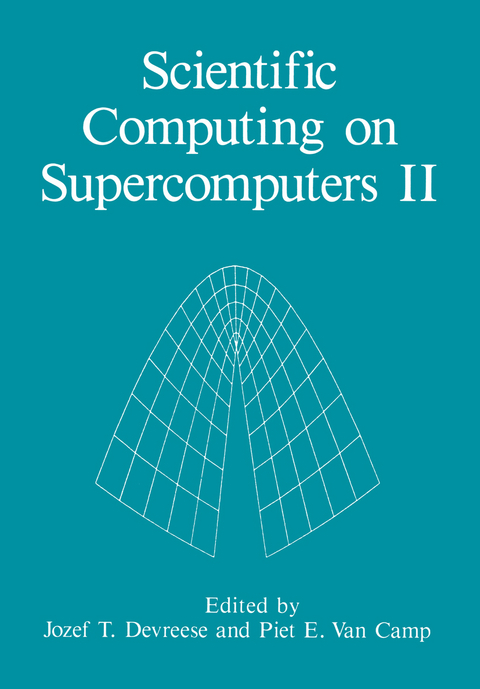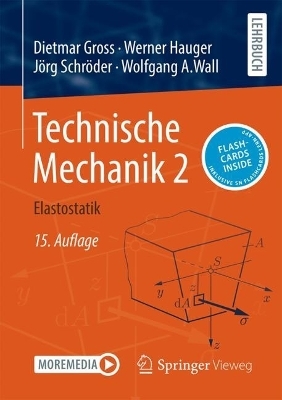
Scientific Computing on Supercomputers II
Kluwer Academic/Plenum Publishers (Verlag)
978-0-306-43712-0 (ISBN)
- Titel z.Zt. nicht lieferbar
- Versandkostenfrei innerhalb Deutschlands
- Auch auf Rechnung
- Verfügbarkeit in der Filiale vor Ort prüfen
- Artikel merken
Vectorization, Optimization and Supercomputer Architecture.- Abstract.- 1. The architecture of vector computers.- 2. Arithmetic operations, memory bandwidth and memory access.- 3. Data structures and the design of algorithms.- 4. Matrix multiplication and related problems.- 5. Red-black SOR and diagonal storing of matrices.- 6. The linear first order recurrence.- 7. Generation of random numbers.- 8. Supercomputer software independent of a special architecture.- 9. Concluding remarks.- 10. References.- Vectorization of Some General Purpose Algorithms.- Abstract.- I. Introduction.- II. The vector concept in Fortran-200.- III. Main vector extensions in Fortran-200.- IV. Intrinsic functions.- Conclusion.- References.- ASTRID: a Programming Environment for Scientific Applications on Parallel Vector Computers.- Abstract.- 1. Introduction.- 2. Organization of ASTRID.- 3. ASTRID command language.- 4. MiniM: mini-modeller to define the geometry.- 5. CASE: interface to define physical quantities.- 6. Mesh: numerical mesh.- 7. Solve: solves the problem.- 8. BASPL: graphics system.- 9. Application: distribution of electrical contacts.- Acknowledgments.- References.- Large Scale Computations in Solid State Physics.- I. Introduction.- II. Numerical procedures.- III. Summary of the results.- IV. Acknowledgment.- Appendix A: the density functional theory.- Appendix B: the pseudopotential theory and plane wave expansion.- References.- Could User-friendly Supercomputers be Designed?.- Abstract.- 1. Introduction.- 2. The requirements for a supercomputer in engineering sciences.- 3. Parallel architectures.- 4. The continuous pipe vector computer (CPVC).- 5. Concluding remarks.- 6. Weak points of present supercomputer architectures.- 7. References.- The Use of Transputers in Quantum Chemistry.- Quantum chemistry and computer.- Parallel computer architectures or why we use transputers.- Programming environment for transputer systems.- Developing programs for transputer systems.- A direct SCF-program.- Testing the direct SCF-program.- Improving the performance.- First experience with Helios.- Conclusion.- References.- Domain Decomposition Methods for Partial Differential Equations and Parallel Computing.- Abstract.- 1. Introduction.- 2. The Schwarz alternative principle.- 3. The Schur complement method.- 4. The hybrid element method.- 5. Implementation of the hybrid method for solving a three-dimensional structural analysis problem.- 6. Conclusions.- References.- TERPSICHORE: A Three-Dimensional Ideal Magnetohydrodynamic Stability Program.- Abstract.- 1. Introduction.- 2. The physics problem.- 3. The organization of TERPSICHORE.- 4. The test case.- 5. Performance measurements.- Acknowledgments.- References.- The Bridge from Present (Sequential) Systems to Future (Parallel) Systems: the Parallel Programming Environments Express and CSTools.- Abstract.- Requirements of a good parallel programming environment.- An overview of parallel programming environments and languages.- The CSTools cross-development toolset.- The Express portable parallel programming environment.- Some features of Express.- An example: transputer implementation of the Kohonen feature map.- A comparison of Express and CSTools.- Conclusion.- Monte Carlo Methods in Classical Statistical Mechanics.- I. Introduction.- II. Monte Carlo calculations.- III. The scheme in practice: Monte Carlo in the canonical ensemble.- IV. Monte Carlo calculations in the grand canonical ensemble.- V. Final remarks.- Acknowledgement.- References.- The Usefulness of Vector Computers for Performing Simultaneous Experiments.- 1. Basic principles.- 2. Example: throwing a dice.- 3. Example: path integrals.- Conclusions.- Acknowledgments.- References.
| Erscheint lt. Verlag | 31.1.1991 |
|---|---|
| Zusatzinfo | 260 p. |
| Sprache | englisch |
| Themenwelt | Mathematik / Informatik ► Mathematik ► Angewandte Mathematik |
| Naturwissenschaften ► Physik / Astronomie ► Allgemeines / Lexika | |
| Technik | |
| ISBN-10 | 0-306-43712-0 / 0306437120 |
| ISBN-13 | 978-0-306-43712-0 / 9780306437120 |
| Zustand | Neuware |
| Informationen gemäß Produktsicherheitsverordnung (GPSR) | |
| Haben Sie eine Frage zum Produkt? |
aus dem Bereich


